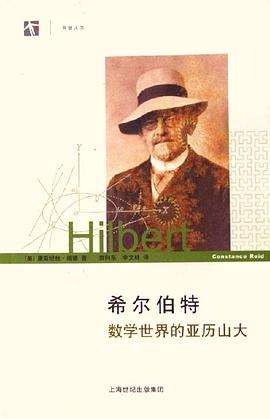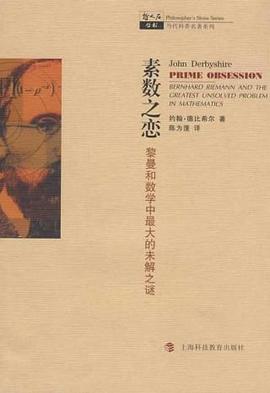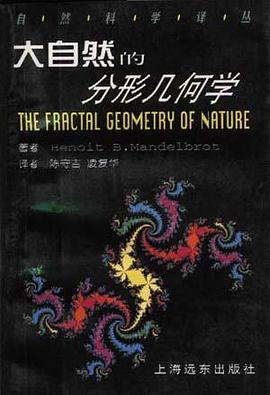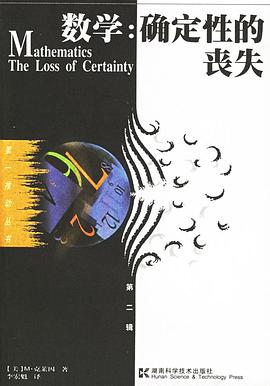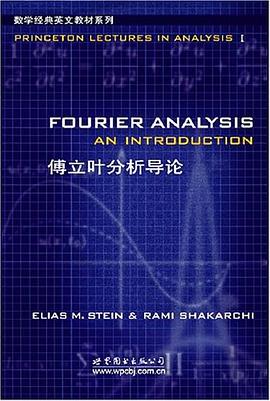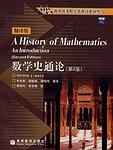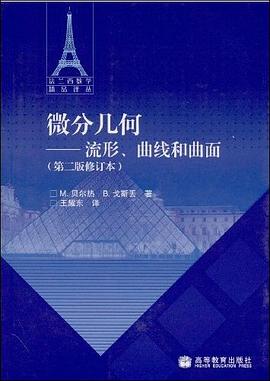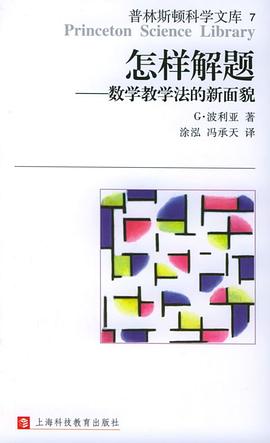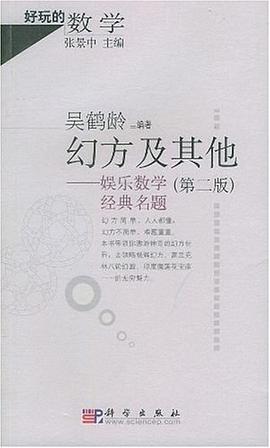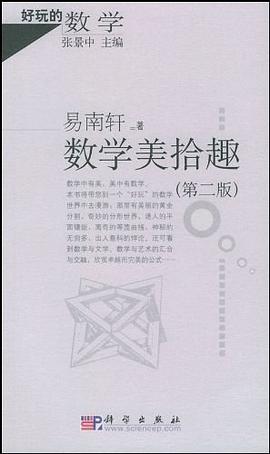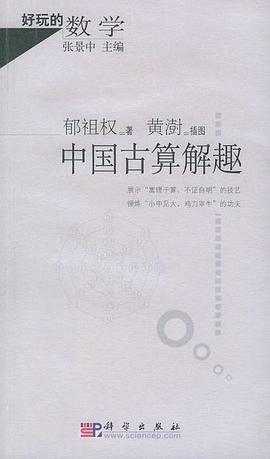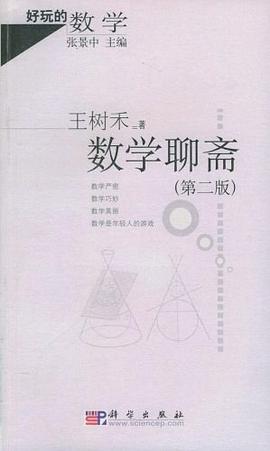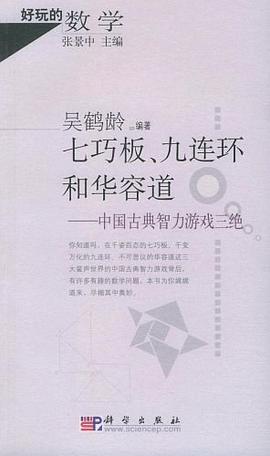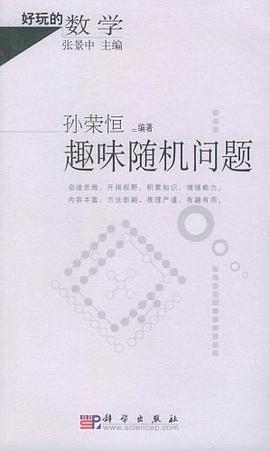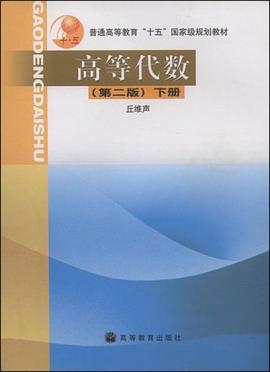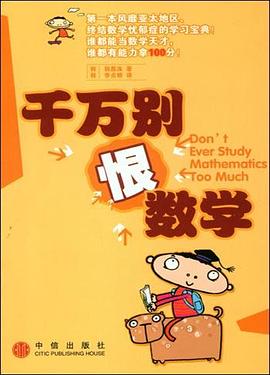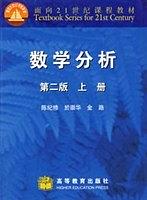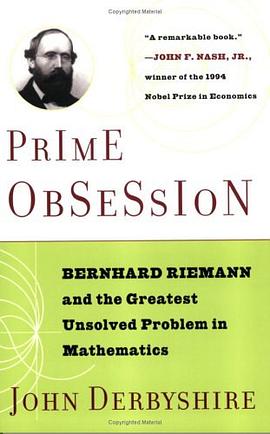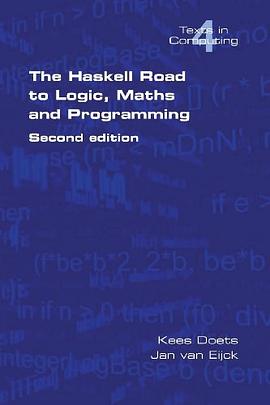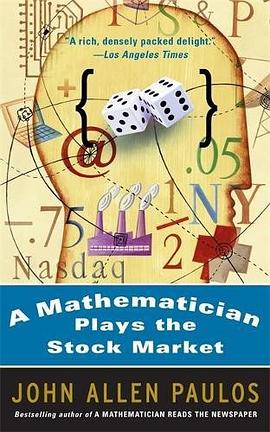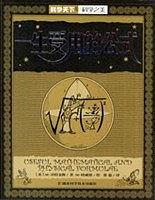preface
chapter one egypt and mesopotamia
1.1 egypt
1.1.1 introduction
1.1.2 number systems and computations
1.1.3 linear equations and proportional reasoning
1.1.4 geometry
1.2 mesopotamia
1.2.1 introduction
1.2.2 methods of computation
1.2.3 geometry
1.2.4 square roots and the pythagorean theorem
1.2.5 solving equations
1.3 conclusion
exercises
references
chapter two greek mathematics to the time of euclid
2.1 the earliest greek mathematics
2.1.1 thales, pythagoras, and the pythagoreans
2.1.2 geometric problem solving and the need for proof
.2.2 euclid and his elements
2.2.1 the pythagorean theorem and its proof
2.2.2 geometric algebra
2.2.3 the pentagon construction
2.2.4 ratio, proportion, and incommensurability
2.2.5 number theory
2.2.6 incommensurability, solid geometry, and the method
of exhaustion
exercises
references
chapter three greek mathematics from archimedes to ptolemy
3.1 archimedes
3.1.1 the determination ofrr
3.1.2 archimedes' method of discovery
3.1.3 sums of series
3.1.4 analysis
3.2 apollonius and the conic sections
3.2.1 conic sections before apollonius
3.2.2 definitions and basic properties of the conics
3.2.3 asymptotes, tangents, and foci
3.2.4 problem solving using conics
3.3 ptolemy and greek astronomy
3.3.1 astronomy before ptolemy
3.3.2 apollonius and hipparchus
3.3.3 ptolemy and his chord table
3.3.4 solving plane triangles
3.3.5 solving spherical triangles
exercises
references
chapter four greek mathematics from diophantus to hypatia
4.1 diophantus and the arithrnetica
4.1.1 linear and quadratic equations
4.1.2 higher-degree equations
4.1.3 the method of false position
4.2 pappus and analysis
4.3 hypatia
exercises
references
chapter five ancient and medieval china
5.1 calculating with numbers
5.2 geometry
5.2.1 the pythagorean theorem and surveying
5.2.2 areas and volumes
5.3 solving equations
5.3.1 systems of linear equations
5.3.2 polynomial equations
5.4 the chinese remainder theorem
5.5 transmission to and from china
exercises
references
chapter six ancient and medieval india
6.1 indian number systems and calculations
6.2 geometry
6.3 algebra
6.4 combinatorics
6.5 trigonometry
6.6 transmission to and from india
exercises
references
chapter seven mathematics in the islamic world
7.1 arithmetic
7.2 algebra
7.2.1 the algebra of al-khwarizmi
7.2.2 the algebra of aba kamil
7.2.3 the algebra of polynomials
7.2.4 induction, sums of powers, and the pascal triangle
7.2.5 the solution of cubic equations
7.3 combinatorics
7.3.1 counting combinations
7.3.2 deriving the combinatorial formulas
7.4 geometry
7.4.1 the parallel postulate
7.4.2 volumes and the method of exhaustion
7.5 trigonometry
7.5.1 the trigonometric functions
7.5.2 spherical trigonometry
7.5.3 values of trigonometric functions
7.6 transmission of islamic mathematics
exercises
references
chapter eight mathematics in medieval europe
8.1 geometry
8.1.1 abraham bar .hiyya's treatise on mensuration
8.1.2 leonardo of pisa's practica geometriae
8.2 combinatorics
8.2.1 the work of abraham ibn ezra
8.2.2 leviben gerson and induction
8.3 medieval algebra
8.3.1 leonardo of pisa's liber abbaci
8.3.2 the work of jordanus de nemore
8.4 the mathematics of kinematics
exercises
references
chapter nine mathematics in the renaissance
9.1 algebra
9.1.1 the abacists
9.1.2 algebra in northern europe
9.1.3 the solution of the cubic equation
9.1.4 bombelli and complex numbers
9.1.5 viete, algebraic symbolism, and analysis
9.2 geometry and trigonometry
9.2.1 art and perspective
9.2.2 the conic sections
9.2.3 regiomontanus and trigonometry
9.3 numerical calculations
9.3.1 simon stevin and decimal fractions
9.3.2 logarithms
9.4 astronomy and physigs
9.4.1 copernicus and the heliocentric universe
9.4.2 johannes kepler and elliptical orbits
9.4.3 galileo and kinematics
exercises
references
chapter ten pre. calculus in the seventeenth century
10.1 algebraic symbolism and the theory of equations
10.1.1 william oughtred and thomas harriot
10.1.2 albert girard and the fundamental theorem of algebra
10.2 analytic geometry
10.2.1 fermat and the introduction to plane and solid loci
10.2.2 descartes and the geometry
10.2.3 the work of jan de witt
10.3 elementary probability
10.3.1 blaise pascal and the beginnings of the theory of probability
10.3.2 christian huygens and the earliest probability text
10.4 number theory
exercises
references
chapter eleven calculus in the seventeenth century
11.1 tangents and extrema
11.1.1 fermat's method of finding extrema
11.1.2 descartes and the method of normals
11.1.3 hudde's algorithm
11.2 areas and volumes
11.2.1 infinitesimals and indivisibles
11.2.2 torricelli and the infinitely long solid
11.2.3 fermat and the area under parabolas and hyperbolas
11.2.4 wallis and fractional exponents
11.2.5 the area under the sine curve and the rectangular hyperbola
11.3 rectification of curves and the fundamental theorem
11.3.1 van heuraet and the rectification of curves
11.3.2 gregory and the fundamental theorem
11.3.3 barrow and the fundamental theorem
11.4 isaac newton
11.4.1 power series
11.4.2 algorithms for calculating fluxions and fluents
11.4.3 the synthetic method of fluxions and newton's physics
11.5 gottfried wilhelm leibniz
11.5.1 sums and differences
11.5.2 the differential triangle and the transmutation theorem
11.5.3 the calculus of differentials
11.5.4 the fundamental theorem and differential equations
exercises
references
chapter twelve analysis in the eighteenth century
12.1 differential equations
12.1.1 the brachistochrone problem
12.1.2 translating newton's synthetic method of fluxions into
the method of differentials
12.1.3 differential equations and the trigonometric functions
12.2 the calculus of several variables
12.2.1 the differential calculus of functions of two variables
12.2.2 multiple integration
12.2.3 partial differential equations: the wave equation
12.3 the textbook organization of the calculus
12.3.1 textbooks in fluxions
12.3.2 textbooks in the differential calculus
12.3.3 euler' s textbooks
12.4 the foundations of the calculus
12.4.1 george berkeley's criticisms and maclaurin's response
12.4.2 euler and d'alembert
12.4.3 lagrange and power series
exercises
references
chapter
thirteen probability and statistics in the eighteenth century
13.1 probability
13.1.1 jakob bernoulli and the ars conjectandi
13.1.2 de moivre and the doctrine of chances
13.2 applications of probability to statistics
13.2.1 errors in observations
13.2.2 de moivre and annuities
13.2.3 bayes and statistical inference
13.2.4 the calculations of laplace
exercises
references
chapter
fourteen algebra and number theory in the eighteenth century
14.1 systems of linear equations
14.2 polynomial equations
14.3 number theory
14.3.1 fermat's last theorem
14.3.2 residues
exercises
references
chapter fifteen geometry in the eighteenth century
15.1 the parallel postulate
15.1.1 saccheri and the parallel postulate
15.1.2 lambert and the parallel postulate
15.2 differential geometry of curves and surfaces
15.2.1 euler and space curves and surfaces
15.2.2 the work of monge
15.3 euler and the beginnings of topology
exercises
references
chapter sixteen algebra and number theory in the nineteenth century
16.1 number theory
16.1.1 gauss and congruences
16.1.2 fermat's last theorem and unique factorization
16.2 solving algebraic equations
16.2.1 cyclotomic equations
16.2.2 the theory of permutations
16.2.3 the unsolvability of the quintic
16.2.4 the work of galois
16.2.5 jordan and the theory of groups of substitutions
16.3 groups and fields -- the beginning of structure
16.3.1 gauss and quadratic forms
16.3.2 kronecker and the structure of abelian groups
16.3.3 groups of transformations
16.3.4 axiomatizafion of the group concept
16.3.5 the concept of a field
16.4 matrices and systems of linear equations
16.4.1 basic ideas of matrices
16.4.2 eigenvalues and eigenvectors
16.4.3 solutions of systems of equations
16.4.4 systems of linear inequalities
exercises
references
chapter
seventeen analysis in the nineteenth century
17.1 rigor in analysis
17.1.1 limits
17.1.2 continuity
17.1.3 convergence
17.1.4 derivatives
17.1.5 integrals
17.1.6 fourier series and the notion of a function
17.1.7 the riemann integral
17.1.8 uniform convergence
17.2 the arithmetization of analysis
17.2.1 dedekind cuts
17.2.2 cantor and fundamental sequences
17.2.3 the theory of sets
17.2.4 dedekind and axioms for the natural numbers
17.3 complex analysis
17.3.1 geometrical representation of complex numbers
17.3.2 complex functions
17.3.3 the riemann zeta function
17.4 vector analysis
17.4.1 surface integrals and the divergence theorem
17.4.2 stokes's theorem
exercises
references
chapter
eighteen statistics in the nineteenth century
18.1 the method of least squares
18.1.1 the work of legendre
18.1.2 gauss and the derivation of the method of least squares
18.2 statistics and the social sciences
18.3 statistical graphs
exercises
references
chapter
nineteen geometry in the nineteenth century
19.1 non-euclidean geometry
19.1.1 taurinus and log-spherical geometry
19.1.2 the non-euclidean geometry of lobachevsky and bolyai
19.1.3 models of non-euclidean geometry
19.2 geometry in n dimensions
19.2.1 grassmann and the ausdehnungslehre
19.2.2 vector spaces
19.3 graph theory and the four-color problem
exercises
references
chapter twenty aspects of the twentieth century
20.1 the growth of abstraction
20.1.1 the axiomatization of vector spaces
20.1.2 the theory of rings
20.1.3 the axiomatization of set theory
20.2 major questions answered
20.2.1 the proof of fermat's last theorem
20.2.2 the classification of the finite simple groups
20.2.3 the proof of the four-color theorem
20.3 growth of new fields of mathematics
20.3.1 the statistical revolution
20.3.2 linear programming
20.4 computers and mathematics
20.4.1 the prehistory of computers
20.4.2 turing and computability
20.4.3 von neumann's computer
exercises
references
appendix using this textbook in teaching mathematics
courses and topics
sample lesson ideas for incorporating history
time line
answers to selected problems
general references in the history of mathematics
index
· · · · · · (
收起)

 希尔伯特 2025 pdf epub mobi 电子书
希尔伯特 2025 pdf epub mobi 电子书 素数之恋 2025 pdf epub mobi 电子书
素数之恋 2025 pdf epub mobi 电子书 大自然的分形几何学 2025 pdf epub mobi 电子书
大自然的分形几何学 2025 pdf epub mobi 电子书 数学:确定性的丧失 2025 pdf epub mobi 电子书
数学:确定性的丧失 2025 pdf epub mobi 电子书 傅立叶分析导论 2025 pdf epub mobi 电子书
傅立叶分析导论 2025 pdf epub mobi 电子书 双螺旋 2025 pdf epub mobi 电子书
双螺旋 2025 pdf epub mobi 电子书 数学史通论(第2版.翻译版) 2025 pdf epub mobi 电子书
数学史通论(第2版.翻译版) 2025 pdf epub mobi 电子书 微分几何 2025 pdf epub mobi 电子书
微分几何 2025 pdf epub mobi 电子书 怎样解题 2025 pdf epub mobi 电子书
怎样解题 2025 pdf epub mobi 电子书 数学与知识的探求 2025 pdf epub mobi 电子书
数学与知识的探求 2025 pdf epub mobi 电子书 幻方及其他 2025 pdf epub mobi 电子书
幻方及其他 2025 pdf epub mobi 电子书 数学美拾趣 2025 pdf epub mobi 电子书
数学美拾趣 2025 pdf epub mobi 电子书 中国古算解趣 2025 pdf epub mobi 电子书
中国古算解趣 2025 pdf epub mobi 电子书 数学聊斋-(第二版) 2025 pdf epub mobi 电子书
数学聊斋-(第二版) 2025 pdf epub mobi 电子书 七巧板、九连环和华容道 2025 pdf epub mobi 电子书
七巧板、九连环和华容道 2025 pdf epub mobi 电子书 趣味随机问题 2025 pdf epub mobi 电子书
趣味随机问题 2025 pdf epub mobi 电子书 数学分析(下册) 2025 pdf epub mobi 电子书
数学分析(下册) 2025 pdf epub mobi 电子书 测度论讲义 2025 pdf epub mobi 电子书
测度论讲义 2025 pdf epub mobi 电子书 高等代数(下册) 2025 pdf epub mobi 电子书
高等代数(下册) 2025 pdf epub mobi 电子书 Thomas' Calculus 2025 pdf epub mobi 电子书
Thomas' Calculus 2025 pdf epub mobi 电子书 千万别恨数学 2025 pdf epub mobi 电子书
千万别恨数学 2025 pdf epub mobi 电子书 高等代数学(第2版) 2025 pdf epub mobi 电子书
高等代数学(第2版) 2025 pdf epub mobi 电子书 数学分析(上册) 2025 pdf epub mobi 电子书
数学分析(上册) 2025 pdf epub mobi 电子书 混沌与分形 2025 pdf epub mobi 电子书
混沌与分形 2025 pdf epub mobi 电子书 Prime Obsession 2025 pdf epub mobi 电子书
Prime Obsession 2025 pdf epub mobi 电子书 The Haskell Road to Logic, Maths and Programming. Second Edition 2025 pdf epub mobi 电子书
The Haskell Road to Logic, Maths and Programming. Second Edition 2025 pdf epub mobi 电子书 A Mathematician Plays The Stock Market 2025 pdf epub mobi 电子书
A Mathematician Plays The Stock Market 2025 pdf epub mobi 电子书 所罗门王的智慧 2025 pdf epub mobi 电子书
所罗门王的智慧 2025 pdf epub mobi 电子书 一生受用的公式 2025 pdf epub mobi 电子书
一生受用的公式 2025 pdf epub mobi 电子书 The Cauchy-Schwarz Master Class 2025 pdf epub mobi 电子书
The Cauchy-Schwarz Master Class 2025 pdf epub mobi 电子书

